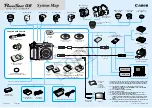
I. CAMERA FEATURES AND OPERATION
20
Background
Both AFPS and Single Point AF are useful in shooting sports. A single point is generally
best in team sports like football, basketball, soccer, and hockey. AFPS is good for sports
like baseball, some track and field, and many individual sports like skiing, skating, etc.
AFPS is also useful in team sports like football or soccer where the player has broken
free of a large pack and the main scene is composed of only one or two players.
Like sports, wildlife photography has situations where different focusing methods are
helpful. AFPS for birds in flight, single running animals in the open; and Single Point AF
for birds in a tree or nest, or animals lurking in woods or tall plants.
The idea here is that the photographer can make that call on-the-fly while shooting,
rather than trying to anticipate prior to bringing the camera to the eye what method
would be best.
Most sports shooters prefer to use a rear button on the camera for focusing rather
than using the shutter in its halfway position. There are several advantages to working
this way.
• The photographer can capture focus on the subject well in advance of shooting the
image without worrying about pre-metering or accidentally firing a shot.
• The camera can stay in focus on a single subject for longer periods of time (e.g.,
waiting for a batter to swing) and when ready, the photographer can shoot with better
camera responsiveness.
• While pressing the AE Lock button in this mode, you have AI Servo tracking focus. Let
go of the button and you are now locked at that distance (as if you were in One-Shot).
And with Canon EF lenses that have Full-Time Manual focusing, including all USM
lenses with distance scales, you now have manual focus… all three focusing options
available without having to take your eye from the finder.
Operation
Assign AFPS as your Home Position (HP). Then go back and set any single or double
focusing point with the AF Point Selection Button. Most photographers would probably
set the center point depending on what they’re shooting, but any focusing point can be
selected if it’s compositionally more pleasing.
Now you have two buttons on the back of the camera that activate focus. When you look
into the finder you will see the single or double AF point you’ve chosen. Hold in the AE
Lock (*) button with your thumb and the camera will servo focus at that point. Or, hold
in the Assist Button and the camera will servo focus using AFPS (see information on
AFPS with AI Servo earlier in this document). Or, focus the lens manually at any time.
In this way, you can choose, while looking at your subject through the viewfinder, which
method is more effective or appropriate to that subject without the distraction of taking
your eye off the subject.
















































